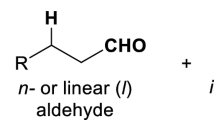Abstract
Berzelius, the Swedish chemist in 1807 introduced the term ‘organic compounds’ as those substances derived from once living organisms (organized systems). Carbon exhibits the property of catenation (formation of chains) and forms a plethora of compounds on earth. Silicon on the other hand which is placed below carbon in the periodic table does not exhibit this property. This article is a brief account of some of the several reagents and classes of compounds encountered in organosilicon chemistry.
Similar content being viewed by others
Suggested Reading
J Clayden, N Greeves, S Warren and P Wothers,Organic Chemistry, Oxford University Press, Oxford, pp. 1287–1304, 2001.
S E Thomas,Organic Synthesis: The Roles of Boron and Silicon, Oxford University Press, Oxford, pp. 47–91, 1994.
E W Colvin,Silicon Reagents in Organic Synthesis, Academic Press Inc., San Diego, CA, 1988.
WP Weber,Silicon Reagents for Organic Synthesis, Springer Verlag, Berlin, 1983.
Author information
Authors and Affiliations
Corresponding author
Rights and permissions
About this article
Cite this article
Prasad, H. Organosilicon reagents in natural product synthesis. Reson 7, 48–64 (2002). https://doi.org/10.1007/BF02834529
Issue Date:
DOI: https://doi.org/10.1007/BF02834529




